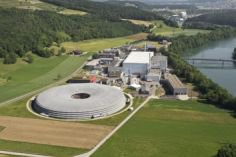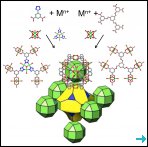The deadline for neutron proposals submissions at PSI is November 15
NMI3 supports researchers for the beam time period I/15 between 01/05/2015 and 31/08/2015.
09/10/2014

The Paul Scherrer Institute (PSI)
PERIOD
Call for proposals for the beam time period I/15 between 01/05/2015 and 31/08/2015.
PROPOSAL-SUBMISSION
New users are kindly asked to contact the instrument responsibles before submitting a proposal to discuss instrumental options and reasonable beam time requests. Please make use of the option to link related previous proposals with their experimental reports to the new one. A proper mention of previous results will provide a certain 'bonus' during the evaluation process. This new feature replaces the previous option to submit 'continuation proposals'.
Guidelines for the proposal submission and further useful information can be found on the SINQ webpages:
http://www.psi.ch/sinq/access-to-sinq
http://www.psi.ch/sinq/call-for-proposals
http://www.psi.ch/sinq/guidelines
INSTRUMENTS
The following instruments will be open for new proposals in cycle I/15:
Powder Diffractometers : HRPT, DMC
Single Crystal Diffractometer : TriCS
Strain Scanner : POLDI
Small Angle Scattering : SANS-I, SANS-II
Reflectometer : AMOR
Triple Axis Spectrometers : TASP, RITA-II, EIGER
Time-of-Flight Spectrometer : FOCUS
Radiography, Imaging : NEUTRA, ICON
(*): Please note that the MuPAD polarimetry option will not be available in cycle I/15 due to technical reason.
Further detailed information about the SINQ instruments can be obtained here .
Please note, the feasibility of complex experiments should always be discussed in advance with the instrument and sample environment responsibles.
DIGITAL USER OFFICE, DUO
Proposals should solely be submitted electronically via the PSI Digital User Office DUO .
NMI3 – SWISS NEUTRONS FOR EUROPE

SINQ is part of the NMI3-Access Programme ' of the European Commission. Users from eligible countries might be supported by reimbursement of travel and accommodation costs. For further info please have a look at http://www.psi.ch/useroffice/sinqss-nmi3
CONTACT ADDRESS
Paul Scherrer Institute
User Office
CH-5232 Villigen – PSI
Switzerland
useroffice@psi.ch
Phone : +41-56-310-4666
PSI Scientific Highlights supported by NMI3
Where and how do plant roots take up water?
Have you ever eaten lupins? They are a common snack in Mediterranean countries. Thanks to NMI3 funding, scientists from the Georg August University of Göttingen in Germany have investigated where and how the roots of these plants take water from the soil. Read here .
The rht net: an ideal blueprint for the construction of a metal–organic framework platform
The need for tunable functional solid-state materials is increasing because of the growing demand to address persisting challenges in global energy issues, environmental sustainability, and others. It is practical and preferable for such materials to be pre-designed and constructed to exhibit the desired properties and specific functionalities for a given targeted application. Read here .
Spins acting like real bar magnets in a new material
The dipolar force between magnetic moments is present in all magnetic systems. The lithium rare earth (RE) tetrafluorides, LiREF4 are an excellent testing ground for the physics of dipolar-coupled systems because the spins in this material behave like real bar magnets. Read here .



